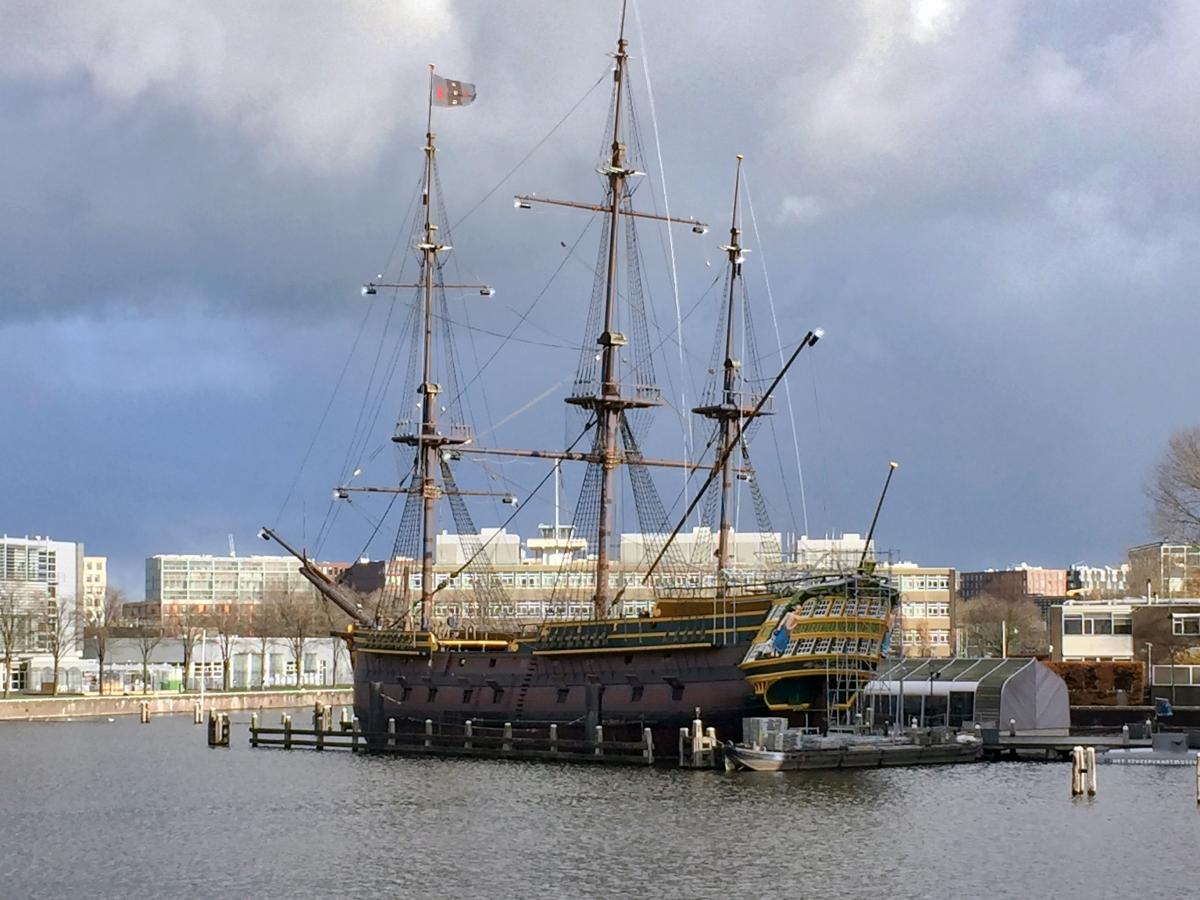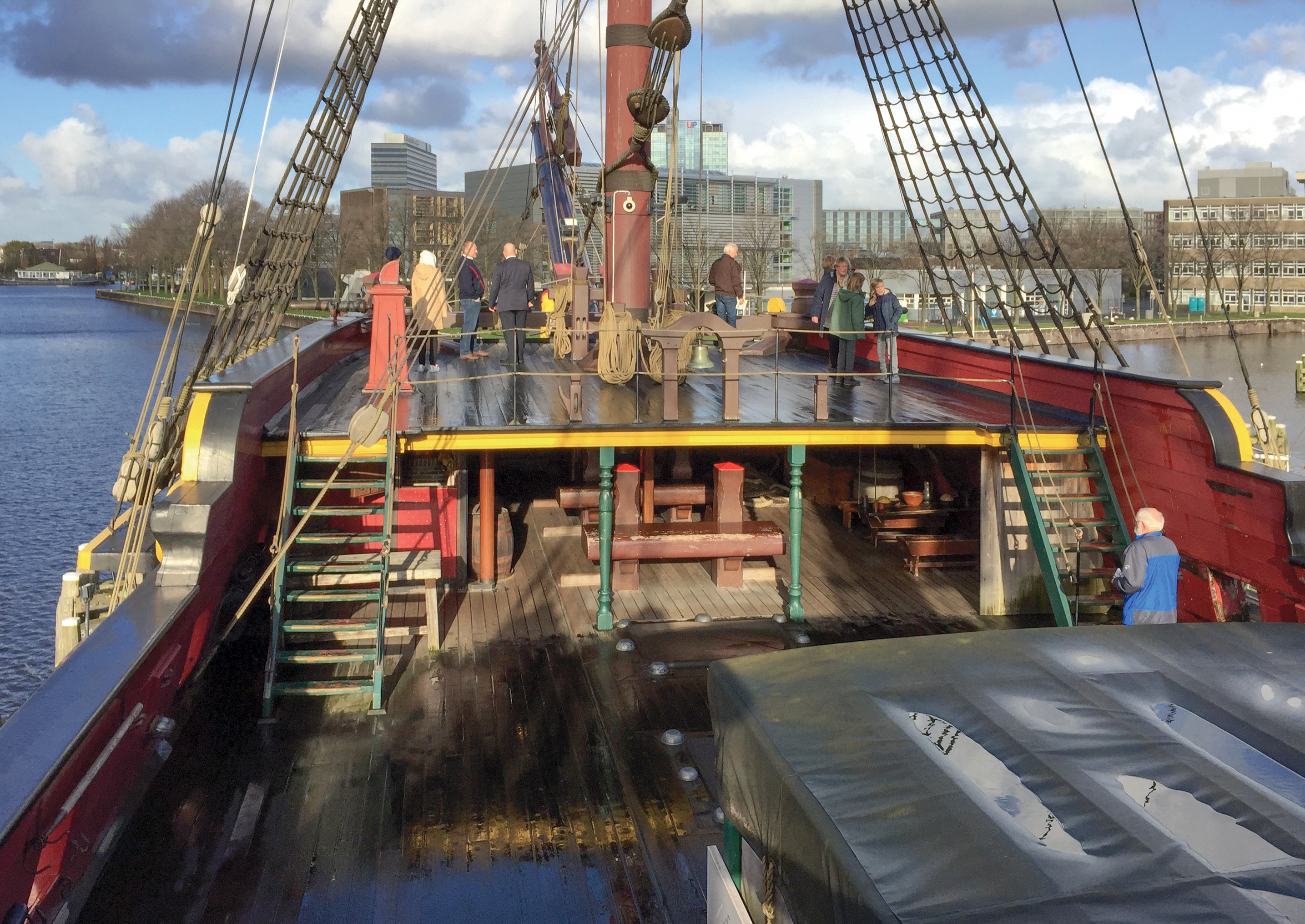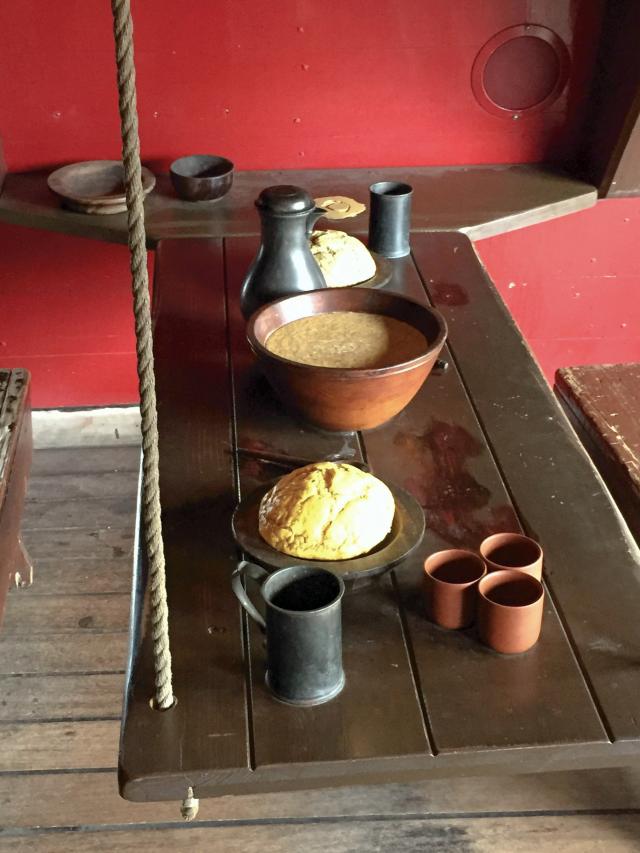The Dutch East India Company (VOC) made its shareholders and Holland rich with its aggressive and successful international trading in the 17th and 18th centuries. Hundreds of VOC merchant cargo ships voyaged to Indonesia, China, and Japan to bring back the spices that Europe wanted, but lacked.
None of those original vessels survives. Today, however, a replica of those sturdy cargo carriers, the Amsterdam, is berthed at the National Maritime Museum in the busy harbor of the city of Amsterdam. Constructed between 1985 and 1990, the ship faithfully represents VOC’s Amsterdam of 1749.
A tour of the Amsterdam will take you from stem to stern and from captain’s cabin to the hold. Visitors enter the ship on the orlop deck, one deck below the main deck, and immediately step into the maritime past. Hammocks hang from overhead, sea chests rest on the deck, and cannons face fore and aft. With slightly more than six feet of head clearance, the orlop seems spacious; when the original Amsterdam sailed, however, the 157-foot vessel carried some 325 crew and soldiers. What appears roomy now was packed with humanity, elbow to elbow. In the background are the sounds of sailors hacking and coughing, timbers creaking, and a lonely fiddle playing a plaintive tune.
On the deck, large interpretive panels present an unblinking view of the arduous life of a sailor on an eight-month voyage to the East Indies. The panels are nicely illustrated with brown-and-white line drawings and text in Dutch and English. One telling phrase, “A sailor hardly ever washes,” provides all the insight one needs to imagine conditions on board these cargo vessels.
Going forward on the orlop brings visitors to the foc’sle, where some senior crew had responsibilities that earned them bunks instead of hammocks. An open sea chest displays their meager possessions: some extra clothing, a wooden bowl and spoon, combs and wooden buttons, and perhaps a musical instrument. Cooperage (barrel-making) and carpentry benches and tools add to the cramped feeling in this space.
By contrast, the Amsterdam’s almost-empty hold seems enormous. Europeans wanted pepper, cloves, nutmeg, and cinnamon and were willing to pay high prices. Several dozen wooden boxes bearing the VOC brand represent the hundreds of spice chests that would have filled the space. Crates of dishes packed in straw and stacks of barrels, lashed tightly together, suggest more of the cargo an East Indiaman carried.
Farther forward in the hold is sail storage and, close by, the compartment for flour, bread, and cheese. Hands-on exhibits allow visitors to simulate loading cargo into the hold. Children will enjoy searching for Rinus the Rat, the ship’s mascot, who is preparing an assault on the Amsterdam’s provision of large round cheeses.
Food was important to morale, and the ship’s cooks prepared it forward on the main deck portside. A small brick galley encloses a stove with turkeys roasting on a spit; hams hang from hooks. Opposite the galley on the starboard side, a mess table shows a sailor’s typical meal: porridge, bread, and beer. The officers ate much better while their supplies lasted. In the aft salon, the officers’ table is set with wine and those turkeys, cheese, and bread on tinware plates.
Close by the officers’ mess are the cabins for the master, officers, surgeon, and passengers. The small bunkrooms, realistically furnished, give visitors an understanding of the hardships of a long ocean voyage.
Going topside to the half deck puts visitors at the ship’s wheel for a photo opportunity. Looking forward to the bow gives a fine view of the ship, Amsterdam’s harbor, and the National Maritime Museum.
Visitors can spend one to two hours exploring this authentically replicated Dutch East Indiaman. Entry is included with admission to the National Maritime Museum, and access to the Amsterdam is through the museum’s north wing.







